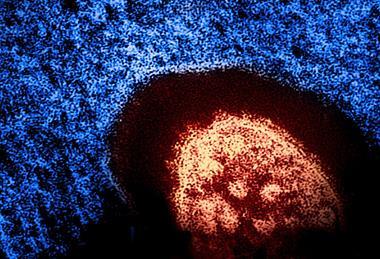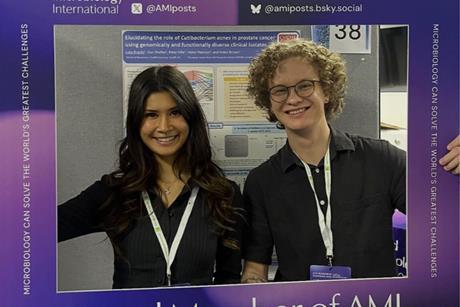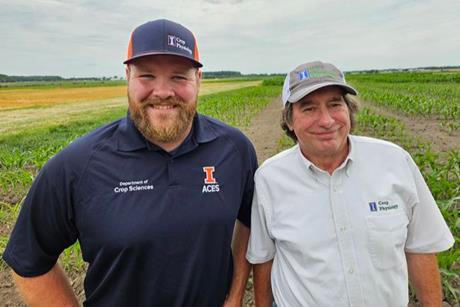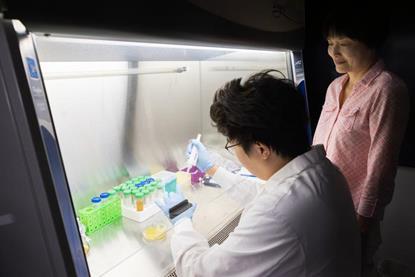Dual lifestyle plant fungus turns ally, protecting cereal crops against harmful Fusarium infections
A plant-friendly fungus that colonises cereal crops can protect the plants against harmful fungal infestations, a new study reveals.
- Previous
- Next
Tiny helpers: how our gut bacteria could protect us from forever chemicals
We are constantly exposed to things in our environment from the medicines we take and contaminants in the food we eat, to particles in the air we breathe. Figuring out which chemicals are harmful and how they affect us, is essential to make our surroundings safer.
Read storyFrom barnyard to bench: what sequencing reveals about microbial life across the farm-scape
We understand the water cycle and the flow of nutrients in ecological systems, but might microbial life also follow a cyclical, interconnected pattern, and how does that look with regards to food production?
How artificial intelligence and machine learning are transforming agriculture’s future
Agriculture is at a pivotal moment in history, and the sector needs to adopt new ideas to survive and flourish. AI and Machine Learning are no longer futuristic concepts; they are transforming farming today and helping to solve problems that have persisted for a long time.
Tap water troubles: how drinking water systems contribute to NTM infections
Commonly found in dust and soil, NTM are worrying microbiologists and health experts alike. But is tap water an unsuspected vehicle for these deceptively harmful infections?
Get unlimited access to The Microbiologist
The Microbiologist provides detailed information on the latest research, topics, reviews, events and news on a wide variety of microbiological topics.
Members of Applied Microbiology International get unlimited access as a benefit. Find out more about AMI Membership

Clean data, clear insights: making AI work for microbiology
We are currently living through a period of AI boom. But as the AI fatigue starts settling in, should microbiologists be racing to embed AI into every pipeline?
Diet, microbiome, and health: epiphenomenon or causal connection?
The gut microbiome is considered a key determinant in human health. Yet, as attention and claims have grown, so has the gap between evidence and interpretation. How much does diet really influence the microbiome?
It’s game over for dangerous Gain of Function research
The Trump adminstration has signed an Executive Order halting federal gain of function research on microbes - but does it throw the baby out with the bathwater? Virologist Simon Wain-Hobson, Emeritus Professor with the Pasteur Institute, Paris, gives his take.
Petri dishes, phages, and public speaking - at the LAM ECS Research Symposium 2025
Rachael Barton and Luka Brajdić open up on their experiences of the Letters in Applied Microbiology ECS Symposium 2025 at the University of Liverpool on June 12.
Meet the Global Ambassadors: our Q&A with Arsalan Zaidi
The Microbiologist gets to know our new Global Ambassador for Pakistan, Dr Arsalan Zaidi, who is Principal Scientist at the National Institute for Biotechnology and Genetic Engineering.
AMI prizewinner Raquel Peixoto reveals how coral symbionts are key to tolerating rising temperatures
Marking World Coral Reef Day on June 1, AMI’s Rachel Carson Prize winner Professor Raquel Peixoto reveals how the ability of corals to tolerate rising temperatures is determined by the type of microorganisms that live inside them.
Taking the sting out of ulcerative colitis
Researchers reveal that the intestinal flora works in combination with the mutated OTUD3 gene and STING signaling to aggravate ulcerative colitis.
Vaccination could mitigate climate-driven disruptions to malaria control
Tropical cyclones in Madagascar lead to sharp spikes in malaria infections – particularly in children – due to interruptions in control efforts, according to a new study. However, newly introduced long-lasting vaccines can help to mitigate these gaps.
Controlled human gut colonization by an engineered microbial therapeutic
Engineered gut bacteria designed to treat kidney stones successfully colonized the gut microbiome and reduced oxalate levels in animal models and early clinical trials in humans, researchers report.
Food security
Researchers develop process to turn food waste into biodegradable plastic
Researchers have developed a process to turn food waste into biodegradable plastic. Their new study offers fundamental findings for any company interested in scaling up the process.
Clean Water
Harmful algae blooms have secret to success over other algaes
An alga that threatens freshwater ecosystems and is toxic to vertebrates has a sneaky way of ensuring its success: It suppresses the growth of algal competitors by releasing chemicals that deprive them of a vital vitamin.
New study reveals how corals teach their offspring to beat the heat
A new study shows that rice coral, an important reef-building species, passes on thermal resistance to their offspring and avoids coral bleaching. Understanding this is important to building healthier coral reefs and protecting their future.





































